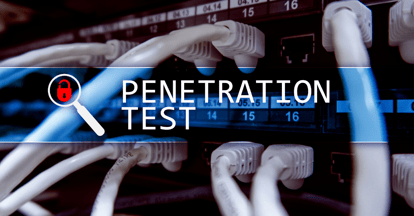As the curtain falls on Data Privacy Week 2024, the echoes of the imperative to safeguard sensitive data and build cyber resilience persist.
With Data Privacy Week drawing to a close, and the great advice for securing your data fresh on your mind, now is the perfect time to expand on the data privacy tips from the National Cybersecurity Alliance by exploring briefly just some of the essential elements for strengthening your organization’s cyber resilience. Let’s delve into the significance of penetration testing, third-party risk mitigation, security risk assessments, vulnerability testing, and the transformative power of awareness.-
Unraveling Vulnerabilities: The Essence of Penetration Testing
Penetration testing stands as a proactive and strategic measure, transcending conventional defenses to uncover vulnerabilities before adversaries can exploit them. In a digital landscape where organizations face thousands of daily cyberattack attempts, a reflective approach to cybersecurity becomes not just advisable but paramount. The statistics on attempted attacks underscore the necessity for a vigilant and anticipatory stance, reinforcing the urgency of adopting advanced measures to counter the evolving sophistication of cyber threats.

Expanding on this, organizations must recognize that penetration testing is not a one-time exercise but a continual process. Frequent assessments are vital to adapt to emerging threats, ensuring that cybersecurity measures evolve alongside the dynamic threat landscape.
Collective Defense: Embracing Third-Party Risk Mitigation Holistically
Statistics indicate that third-party breaches cost organizations millions annually. By comprehensively understanding and collaboratively addressing risks, organizations fortify a collective defense, intercepting potential threats and enhancing overall cybersecurity resilience against relentless risks.
Strategic Illumination: The Role of Security Risk Assessments
Security risk assessments act as illuminating guides, providing insights into potential threats and vulnerabilities that empower strategic decision-making. In a landscape witnessing persistent and significant increases in cyberattacks, the importance of informed decisions becomes even more pronounced. Coupled with strategic resource allocation, security risk assessments contribute to addressing vulnerabilities and fortifying security postures.
To maximize the efficacy of security risk assessments, organizations should integrate them seamlessly into their broader risk management strategies. This involves not only identifying vulnerabilities but prioritizing them based on potential impact and likelihood. By aligning security risk assessments with business objectives, organizations can tailor their cybersecurity efforts to protect the most critical assets effectively.
Navigating the Digital Landscape: The Paramount Importance of Vulnerability Testing
Vulnerability testing stands as a paramount measure, ensuring a comprehensive assessment of potential weaknesses. This proactive approach enables organizations to address vulnerabilities before they become exploitable. The staggering statistic that over 60% of data breaches are linked to vulnerabilities in third-party systems emphasizes the critical role of vulnerability testing in mitigating risks.
In practice, organizations should view vulnerability testing not just as a reactive response but as a proactive strategy integrated into their cybersecurity frameworks. Regular and systematic vulnerability assessments, complemented by swift remediation measures, can create a robust defense mechanism against potential exploits.
Fortifying the Human Firewall: The Power of Awareness
 Cyber awareness programs emerge as transformative tools, empowering individuals to recognize and thwart potential threats, effectively becoming the first line of defense. Acknowledging that human error significantly contributes to security incidents, ongoing awareness initiatives are indispensable.
Cyber awareness programs emerge as transformative tools, empowering individuals to recognize and thwart potential threats, effectively becoming the first line of defense. Acknowledging that human error significantly contributes to security incidents, ongoing awareness initiatives are indispensable.
Education and real-time simulations, such as cyber range exercises, become invaluable components in this regard, providing practical experiences that fortify the human element of cybersecurity. The power of awareness extends beyond knowledge; it cultivates a culture of vigilance and responsibility.
To further enhance the impact of awareness programs, organizations should consider tailoring them to specific roles and responsibilities within the company. By delivering targeted and role-specific training, employees can develop a deeper understanding of the cybersecurity risks relevant to their tasks, fostering a more resilient workforce.
Summary
As Data Privacy Week 2024 gracefully transitions into memory, the commitment to fortifying cybersecurity resilience must remain unwavering. This comprehensive exploration into penetration testing, third-party risk mitigation, security risk assessments, vulnerability testing, and the transformative power of awareness, supported by overwhelming statistics on relentless risks, underscores the need to elevate our dedication.
Cultivating a community valuing continuous learning, preparedness, and resilience against evolving cyber threats is essential. The path forward demands a collective effort to build cyber resilience for a secure digital future that extends far beyond the boundaries of Data Privacy Week.
This expanded insight not only delves deeper into the critical components of cyber resilience but also provides practical considerations for organizations looking to implement and sustain robust cybersecurity measures. The evolving nature of cyber threats requires a proactive and dynamic approach, and the recommendations outlined here aim to equip organizations with the knowledge and strategies needed to navigate the complex cybersecurity landscape successfully.
Learn more about how to elevate your organization's cyber resilience in 2024:





.png)


